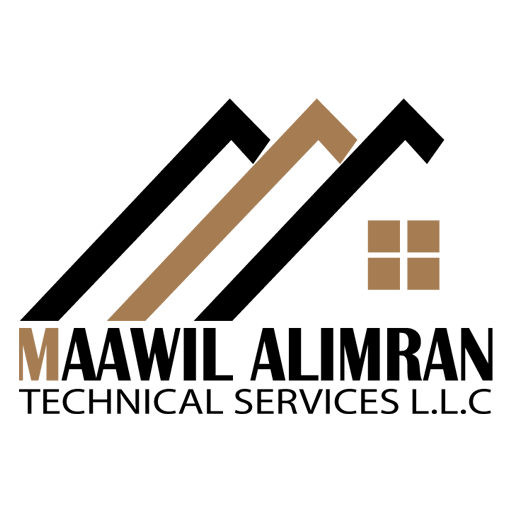Services
We ensure that experienced, qualified and professional technicians perform the work on site with precision and quality.
Glass & Aluminum Installation & Maintenance

Glass and aluminum are two of the most commonly used materials in the construction and architecture industries. They are valued for their durability, aesthetic appeal, and versatility in a wide range of applications. Proper installation and maintenance are crucial to ensure the longevity and optimal performance of glass and aluminum systems.
Glass Installation
Glass installation involves the careful placement and securing of glass panels or windows into a building’s structure. This process requires meticulous planning, specialized tools, and adherence to safety protocols. Key considerations during glass installation include:
- Measurement and Sizing: Accurate measurements of the opening or frame are essential to ensure a proper fit and minimize the risk of gaps or air leaks.
- Glass Type Selection: The choice of glass type (e.g., tempered, laminated, or insulated) depends on the specific application, building codes, and performance requirements.
- Framing and Sealing: The glass panels are typically mounted into a frame, which must be properly sealed to prevent water intrusion and air leaks.
- Safety Measures: Proper handling and installation techniques are crucial to prevent injury and ensure the structural integrity of the glass installation.
Aluminum Installation
Aluminum is a popular choice for doors, windows, and curtain wall systems due to its lightweight, durability, and corrosion-resistance. Aluminum installation involves the assembly and integration of various components, including frames, mullions, and glazing. Key aspects of aluminum installation include:
- Frame Assembly: Precise measurements, cutting, and fitting of the aluminum frames are essential to ensure a secure and properly aligned installation.
- Glazing Integration: The glass panels are carefully inserted and secured into the aluminum frames, often using specialized gaskets and sealants.
- Thermal Breaks: Thermal breaks, which are insulating materials inserted between the inner and outer frames, are crucial to improve energy efficiency and prevent condensation.
- Weatherproofing: Proper sealing and caulking around the frame and glazing are necessary to protect against water infiltration, air leaks, and weather-related damage.
Maintenance
Proper maintenance of glass and aluminum systems is crucial to extend their lifespan and ensure their continued performance. Maintenance activities may include:
- Cleaning: Regular cleaning of the glass and aluminum surfaces using appropriate cleaning products and techniques to remove dirt, grime, and stains.
- Inspection: Periodic inspections to identify and address any issues, such as cracks, loose hardware, or sealant deterioration.
- Repair and Replacement: Timely repairs or replacement of damaged components, such as broken glass, faulty hardware, or deteriorated sealants.
- Lubrication: Applying lubricants to moving parts, such as door hinges and window mechanisms, to ensure smooth operation and prevent wear.
Proper installation and maintenance of glass and aluminum systems are essential to ensure their long-term functionality, aesthetics, and energy efficiency. By following best practices and adhering to industry standards, building owners and facility managers can extend the lifespan of these critical components and maintain the overall integrity of their structures.
Floor & Wall Tiling Works
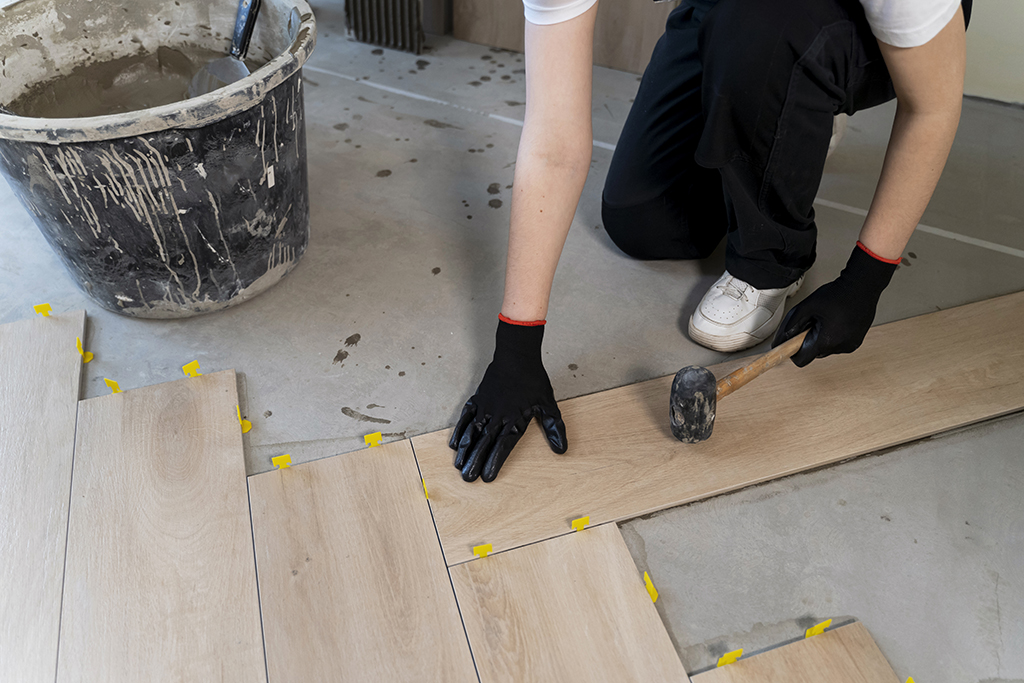
Tiling is a popular and versatile method of finishing floors and walls in a variety of residential, commercial, and industrial settings. Tile materials, such as ceramics, natural stones, and porcelain, offer a wide range of design options, durability, and easy maintenance. Proper installation and maintenance of floor and wall tiling are crucial to ensure the longevity and performance of the tiled surfaces.
Tile Installation
The process of tile installation involves several key steps:
- Surface Preparation: The substrate (floor or wall) must be clean, level, and free of any irregularities or contaminants to ensure a successful tile installation.
- Layout and Design: Careful planning of the tile pattern, alignment, and grout lines is essential to achieve a visually appealing and consistent look.
- Adhesive Application: The appropriate adhesive (mortar) is applied to the substrate, and the tiles are then firmly pressed into place.
- Grouting: Once the adhesive has cured, the spaces between the tiles are filled with grout, which helps to secure the tiles and provide a finished appearance.
- Sealing: Depending on the tile material and application, a sealant may be applied to protect the tiles and grout from moisture, stains, and wear.
Tile Types and Applications
Tiles come in a wide variety of materials, sizes, and finishes, each with their own unique properties and suitable applications:
- Ceramic Tiles: Affordable and versatile, ceramic tiles are a popular choice for floors and walls in residential and commercial settings.
- Porcelain Tiles: Durable and low-maintenance, porcelain tiles are often used in high-traffic areas, such as commercial spaces and outdoor applications.
- Natural Stone Tiles: Elegant and luxurious, natural stone tiles like marble, granite, and travertine are commonly used in upscale residential and commercial projects.
- Mosaic Tiles: Small, intricate tiles that can be used to create decorative patterns and accents on floors, walls, and backsplashes.
Tile Maintenance
Proper maintenance of tiled surfaces is essential to preserve their appearance and longevity. Maintenance activities may include:
- Regular Cleaning: Using the appropriate cleaning products and techniques to remove dirt, spills, and build-up from the tile and grout.
- Grout Sealing: Periodically applying a grout sealer to protect the porous grout material from stains and moisture.
- Crack and Damage Repair: Addressing any cracks, chips, or loose tiles promptly to prevent further deterioration.
- Regrouting: Replacing deteriorated or discolored grout to maintain a clean and uniform appearance.
Tile installation and maintenance are critical components of any successful flooring or wall finishing project. By adhering to best practices and industry standards, contractors and homeowners can ensure the long-term performance, durability, and aesthetic appeal of their tiled surfaces.
Electrical Fittings & Fixtures Repairing & Maintenance
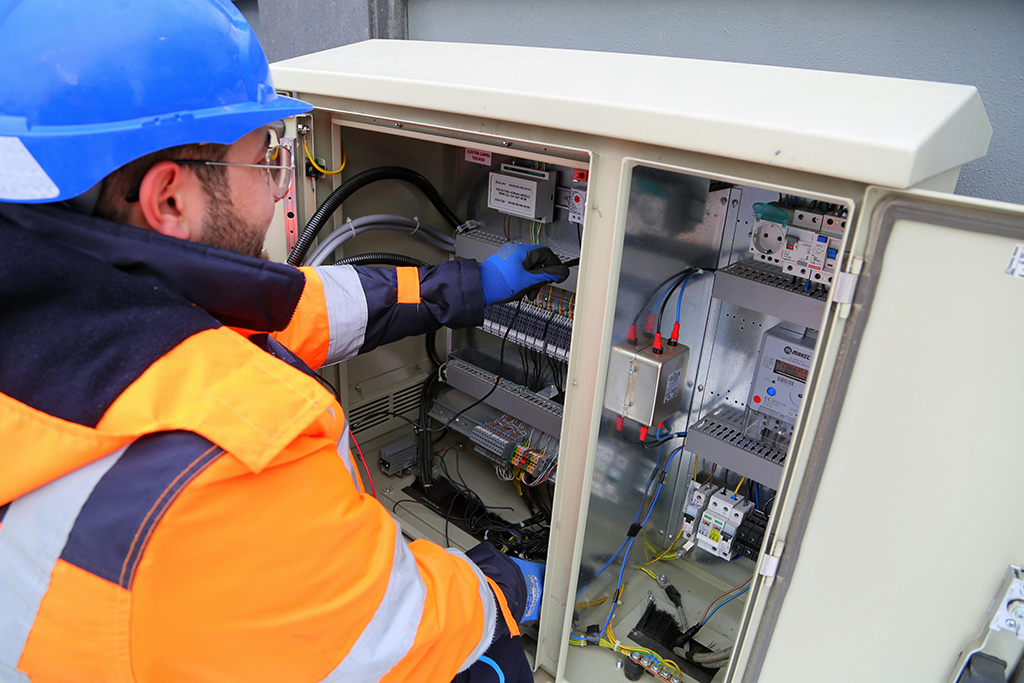
Electrical fittings and fixtures are an integral part of any building’s electrical infrastructure. Over time, these components can become worn, damaged, or malfunctioning due to age, wear and tear, or improper use. Proper maintenance and timely repair of these fittings and fixtures is crucial to ensure the safety and efficiency of a building’s electrical system.
Repairing and maintaining electrical fittings and fixtures typically involves the following steps:
- Inspection: Regularly inspecting electrical fittings and fixtures to identify any issues or potential problems. This can include checking for loose connections, damaged cords or wiring, malfunctioning switches or outlets, and other signs of wear.
- Troubleshooting: Once an issue is identified, the next step is to diagnose the problem. This may involve testing the component, checking for power supply, and isolating the root cause of the malfunction.
- Repair or Replacement: Depending on the nature and extent of the damage, the technician may need to repair the existing component or replace it entirely. Repairs may involve tightening connections, replacing worn parts, or rewiring the fixture.
- Testing and Verification: After the repair or replacement, the technician should test the component to ensure it is functioning properly and meets safety standards.
- Preventive Maintenance: Regular cleaning, tightening of connections, and inspection of electrical fittings and fixtures can help prevent future issues and extend their lifespan.
It is important to note that electrical work should only be performed by qualified and licensed professionals to ensure the safety of the occupants and prevent further damage to the electrical system.
Painting Contracting
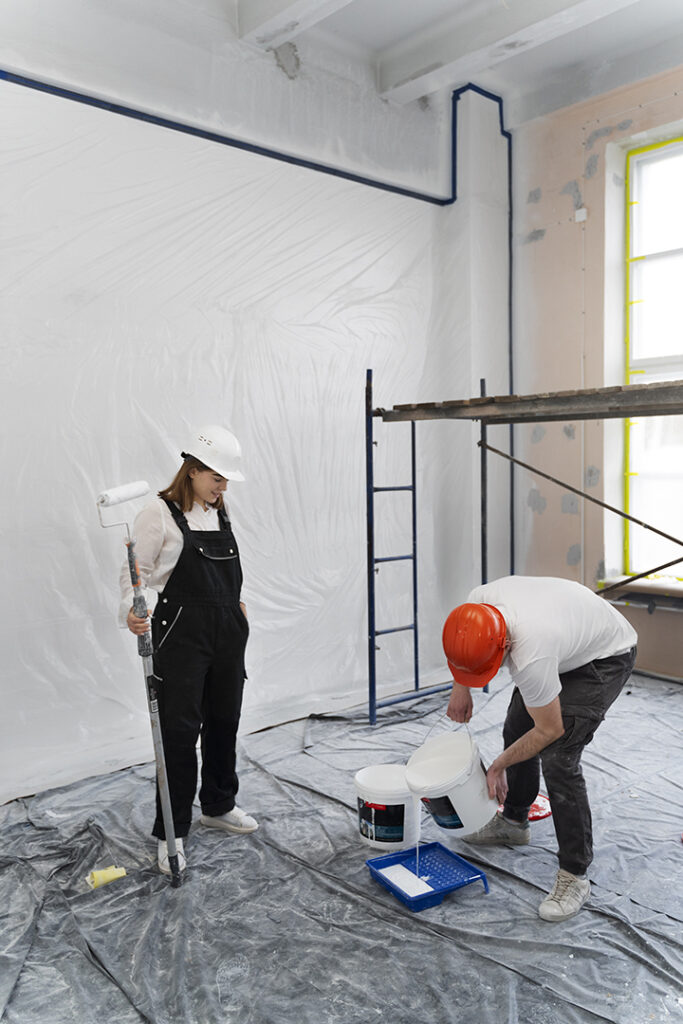
Painting contracting is the professional service of providing painting and related services for both residential and commercial properties. Painting contractors are responsible for the preparation, application, and finishing of paint and coatings on various surfaces such as walls, ceilings, trim, and exteriors.
The key aspects of painting contracting include:
- Estimating and Bidding:
- Inspecting the property to assess the scope of work
- Calculating material and labor costs to provide an accurate bid or estimate
- Surface Preparation:
- Repairing any cracks, holes, or damage to the surfaces
- Cleaning and degreasing surfaces to ensure proper paint adhesion
- Priming or sealing surfaces as needed
- Paint Application:
- Selecting the appropriate paint or coating based on the surface and desired finish
- Applying the paint using brushes, rollers, or sprayers in a professional manner
- Finishing Touches:
- Ensuring a seamless, consistent, and high-quality finish
- Cleaning up the work area and properly disposing of any waste materials
- Warranty and Guarantee:
- Providing a warranty or guarantee on the work performed
- Addressing any issues or touch-ups that may arise after the project is complete
Painting contractors often specialize in different types of projects, such as:
- Residential interior and exterior painting
- Commercial office and industrial painting
- Specialty finishes like faux painting, murals, or decorative techniques
- Historic preservation and restoration painting
Proper licensing, insurance, and adherence to safety protocols are crucial for painting contractors to ensure the quality and safety of their work. Effective project management, efficient crew coordination, and attention to detail are also key skills for successful painting contractors.
Swimming Pools Installation Works
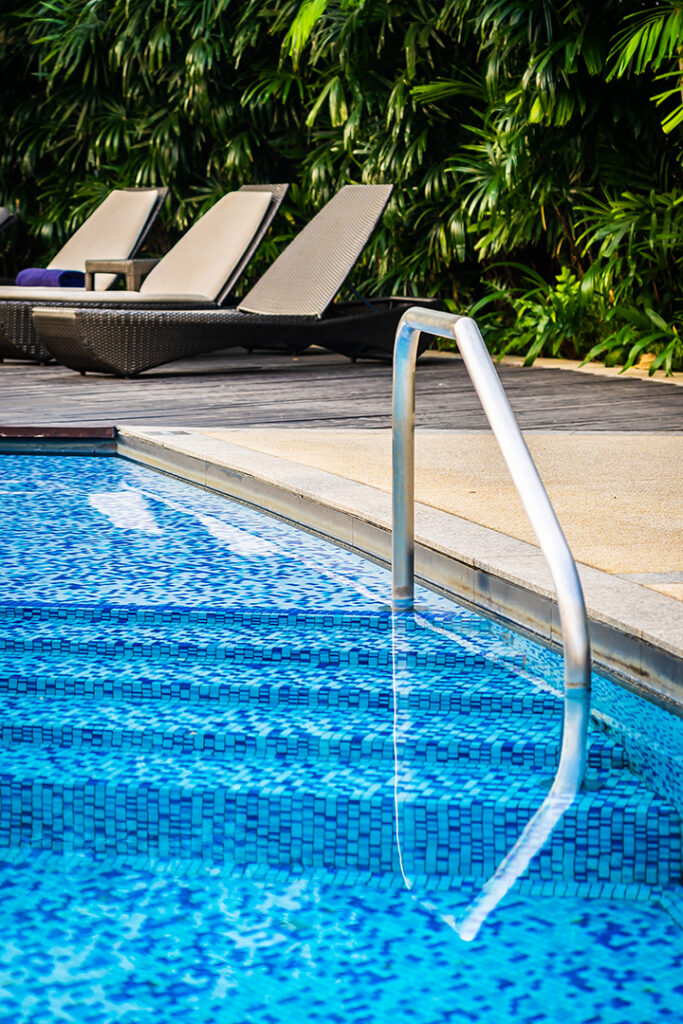
The installation of a swimming pool involves a comprehensive process that requires the expertise of specialized professionals. Swimming pool installation works typically include the following key steps:
- Site Preparation:
- Clearing and excavating the designated area for the pool
- Ensuring proper drainage and soil compaction
- Laying the necessary foundation and plumbing infrastructure
- Pool Shell Construction:
- Constructing the pool shell, which can be made of concrete, fiberglass, or vinyl
- Reinforcing the shell with steel or other materials for structural integrity
- Applying waterproofing sealants and coatings
- Plumbing and Electrical Work:
- Installing the pool’s filtration system, including pumps, filters, and skimmers
- Connecting the pool’s plumbing to the home’s water and drainage systems
- Wiring the pool’s lighting, heating, and control systems
- Deck and Patio Installation:
- Building the surrounding deck or patio area, often using concrete, pavers, or natural stone
- Ensuring proper drainage and slip-resistant surfaces
- Finishing Touches:
- Applying the final pool finish, such as tile, plaster, or specialized coatings
- Installing any additional features, such as waterfalls, fountains, or slides
- Performing final testing and adjustments to ensure the pool’s proper functionality
The installation of a swimming pool requires careful planning, adherence to local building codes, and the coordination of various tradespeople, including excavators, concrete specialists, plumbers, electricians, and landscape contractors.
Swimming pool installation projects can vary significantly in complexity, depending on factors such as the pool size, shape, materials used, and any additional features or customizations. Proper site evaluation, design considerations, and project management are crucial to ensure a successful and safe pool installation.
Maintaining a Healthy Swimming Pool

Proper swimming pool maintenance is essential to ensuring your pool stays clean, safe, and enjoyable for years to come. Without regular care and upkeep, pools can quickly become breeding grounds for algae, bacteria, and other contaminants that pose health risks. A well-maintained pool, on the other hand, provides a refreshing oasis for recreation, relaxation, and exercise.
Key Elements of Pool Maintenance
There are several critical components to an effective pool maintenance routine:
- Water Chemistry: Regularly testing and balancing the pool’s pH, alkalinity, chlorine/sanitizer, and other chemical levels is crucial. Imbalanced water chemistry can lead to algae growth, cloudy water, skin/eye irritation, and other issues.
- Cleaning and Skimming: Removing debris from the pool’s surface, walls, and floor through skimming, brushing, and vacuuming prevents the buildup of organic matter that feeds algae.
- Filter Maintenance: Cleaning or replacing the pool filter as needed keeps the water circulating properly and removes small particles.
- Equipment Inspection: Checking pumps, valves, timers, and other equipment for proper function and making repairs quickly can avoid more costly breakdowns down the line.
- Seasonal Preparations: Properly opening the pool in spring and winterizing it in fall protects the equipment and water quality during periods of non-use.
Professional Pool Maintenance Services
While some basic pool maintenance can be done DIY, many homeowners and pool owners choose to hire professional pool service companies. The benefits of professional pool maintenance include:
- Consistent, scheduled cleanings and water testing
- Specialized knowledge and equipment for complex issues
- Time savings – no more hands-on maintenance tasks
- Compliance with local health and safety regulations
- Warranty coverage on parts and labor
Regular, professional pool maintenance is an investment that pays off in the form of a cleaner, safer, and longer-lasting pool that can be enjoyed for years.
Air-Conditioning, Ventilations & Air Filtration Systems Installation & Maintenance
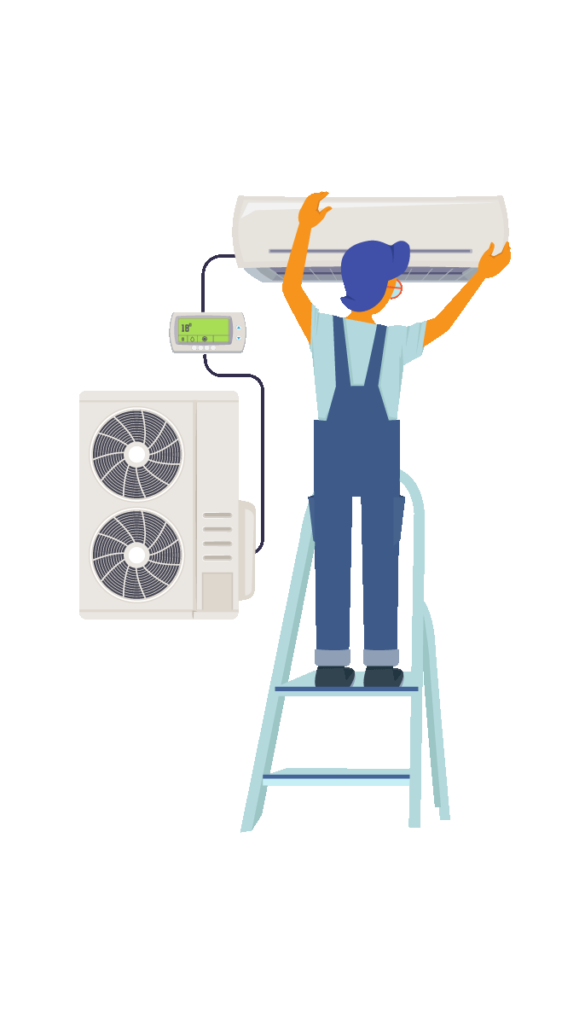
Air-conditioning, ventilation, and air filtration systems are essential components of modern building infrastructure. Proper installation and ongoing maintenance of these systems are crucial for ensuring the comfort, indoor air quality, and energy efficiency of a building.
The key aspects of installing and maintaining these systems include:
- System Design and Installation:
- Assessing the building’s size, layout, and cooling/heating requirements
- Selecting the appropriate HVAC equipment, ductwork, and air filtration components
- Ensuring proper installation and integration of all system components
- Ductwork and Air Delivery:
- Designing and installing efficient ductwork for air distribution
- Balancing the air flow to achieve optimal airflow and temperature regulation
- Air Filtration and Ventilation:
- Integrating air filtration systems, such as HEPA filters or UV air purifiers
- Ensuring adequate ventilation for indoor air quality and circulation
- Electrical and Controls:
- Connecting the HVAC system to the building’s electrical infrastructure
- Installing advanced control systems for programmable temperature regulation, humidity control, and energy management
- Maintenance and Servicing:
- Regularly inspecting and cleaning HVAC components, such as filters, coils, and fans
- Performing preventive maintenance to maintain system efficiency and extend its lifespan
- Addressing any malfunctions or issues promptly to prevent larger problems
- Upgrades and Retrofits:
- Upgrading older HVAC systems with more energy-efficient and technologically advanced equipment
- Retrofitting buildings with improved ventilation and air filtration systems to enhance indoor air quality
Proper installation and maintenance of air-conditioning, ventilation, and air filtration systems require the expertise of licensed HVAC technicians and professionals. Adhering to industry standards, building codes, and safety regulations is crucial for ensuring the safe and efficient operation of these critical building systems.
Building Cleaning Services

Building cleaning services encompass a wide range of professional cleaning and maintenance tasks to keep commercial, industrial, and residential properties well-maintained and presentable. These services are typically provided by specialized cleaning companies or contractors.
The key aspects of building cleaning services include:
- Regular Cleaning and Maintenance:
- Routine cleaning of floors, walls, windows, and other surfaces
- Dusting, vacuuming, and mopping of interior spaces
- Cleaning and restocking of restrooms and common areas
- Specialized Cleaning:
- Deep cleaning of carpets, upholstery, and hard floors
- Cleaning and polishing of hard surfaces like marble, granite, or wood
- Removal of graffiti, gum, or other stains from exterior surfaces
- Waste Management:
- Collecting and disposing of trash and recycling
- Maintaining and cleaning waste disposal areas
- Landscaping and Grounds Maintenance:
- Mowing, trimming, and maintaining the grounds and outdoor areas
- Clearing snow, ice, or debris from walkways and parking lots
- Disinfection and Sanitization:
- Implementing enhanced cleaning protocols for disease prevention
- Using specialized cleaning products and techniques to kill germs and bacteria
- Project-Based Cleaning:
- Preparing and cleaning spaces for events, renovations, or move-ins/move-outs
- Performing post-construction cleanup after building projects
- Quality Assurance and Reporting:
- Adhering to industry standards and client-specific requirements
- Providing regular progress reports and feedback to clients
Building cleaning services are typically customized to meet the specific needs and requirements of each client. Factors such as the size and type of the property, the frequency of cleaning, and any specialized cleaning needs all influence the scope and pricing of these services.
Effective building cleaning services require a team of trained and experienced professionals, as well as the use of appropriate cleaning equipment, supplies, and techniques to ensure the safety, efficiency, and quality of the work performed.
Plumbing & Sanitary Installation
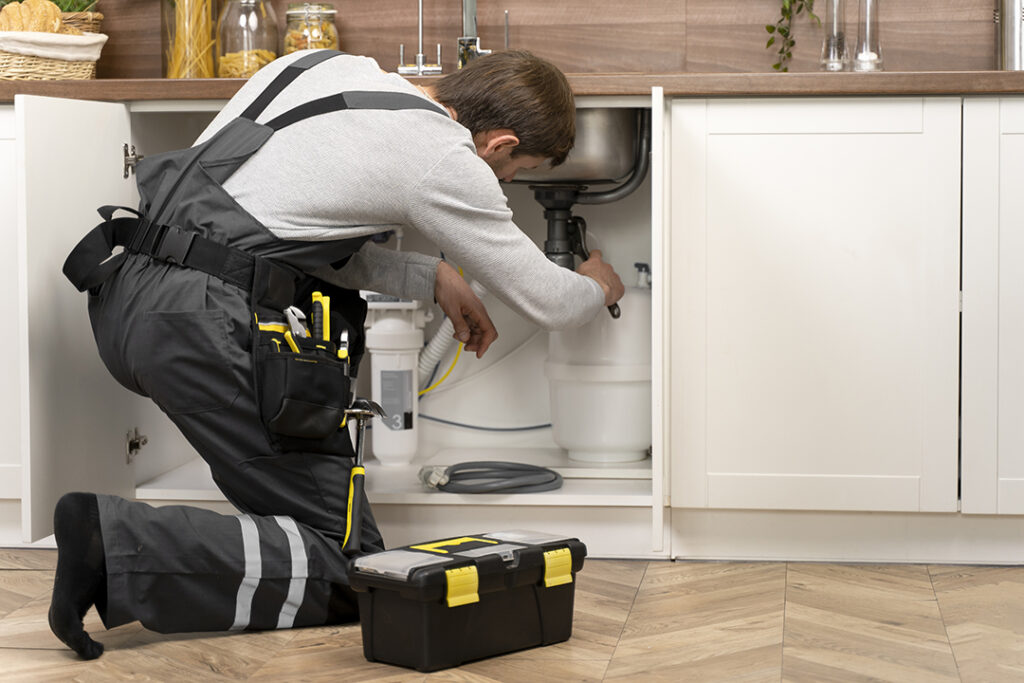
Plumbing and sanitary installation is a critical component of any building’s infrastructure, responsible for the efficient and safe distribution of water, drainage, and waste management systems. These installations require the expertise of licensed and skilled plumbers to ensure compliance with building codes and regulations.
The key aspects of plumbing and sanitary installation include:
- Water Supply Systems:
- Installing and connecting the main water supply lines to the building
- Distributing potable water to various fixtures and appliances throughout the structure
- Ensuring proper water pressure and flow rate
- Drainage and Waste Removal:
- Designing and installing the drainage system, including pipes, traps, and vents
- Connecting sinks, toilets, showers, and other fixtures to the waste disposal network
- Ensuring proper slope and flow for efficient waste removal
- Sanitary Fixtures and Fittings:
- Installing and connecting toilets, sinks, bathtubs, showers, and other plumbing fixtures
- Ensuring the proper function and compliance with safety and accessibility standards
- Heating and Hot Water Systems:
- Integrating water heaters, boilers, and other appliances for hot water distribution
- Connecting the hot water system to various taps and fixtures
- Specialized Plumbing Systems:
- Installing water treatment systems, such as water softeners or filtration units
- Implementing storm water management systems, including drainage and retention
- Integrating specialized systems for commercial or industrial applications
- Inspections and Permitting:
- Obtaining necessary permits and approvals from local authorities
- Coordinating with building inspectors to ensure code compliance
- Maintenance and Repairs:
- Providing preventive maintenance services to identify and address potential issues
- Responding promptly to plumbing emergencies and performing necessary repairs
Effective plumbing and sanitary installation requires a comprehensive understanding of local building codes, industry standards, and best practices. Plumbers must possess the necessary technical skills, problem-solving abilities, and attention to detail to ensure the safe and efficient operation of these critical building systems.
Carpentry & wood Flooring Works
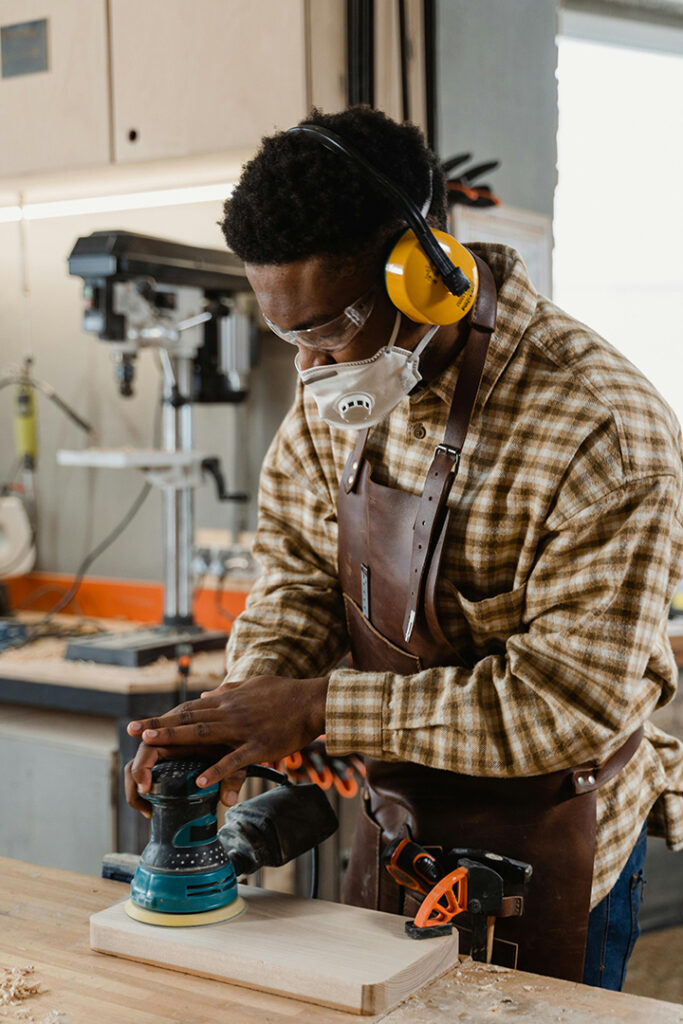
Carpentry and wood flooring are essential components of construction and renovation projects, responsible for the structural integrity, aesthetics, and functionality of a building’s interior and exterior. Skilled carpenters and wood flooring specialists play a crucial role in these specialized tasks.
The key aspects of carpentry and wood flooring works include:
- Framing and Structural Carpentry:
- Constructing and installing load-bearing frameworks, such as walls, floors, and roofs
- Cutting, assembling, and securing wooden beams, joists, and trusses
- Finish Carpentry:
- Installing doors, windows, moldings, and other architectural trim elements
- Crafting and installing custom cabinetry, shelving, and built-in furniture
- Wood Flooring Installation:
- Preparing the subfloor for wood flooring installation
- Laying and securing hardwood, engineered, or laminate flooring
- Ensuring proper alignment, spacing, and expansion allowances
- Hardwood Floor Refinishing:
- Sanding and removing the existing finish from hardwood floors
- Applying new stains, sealants, or varnishes to restore the floor’s appearance
- Wood Siding and Exterior Cladding:
- Installing and maintaining wood siding, shingles, or other exterior cladding
- Ensuring proper weather-sealing and insulation for the building envelope
- Specialty Woodworking:
- Fabricating and installing custom millwork, such as staircases, paneling, and wainscoting
- Crafting unique furniture pieces or architectural elements
- Code Compliance and Safety:
- Adhering to local building codes and safety regulations
- Utilizing appropriate power tools and personal protective equipment
Skilled carpenters and wood flooring specialists must possess a deep understanding of construction techniques, materials, and industry best practices. They must also be able to interpret architectural drawings, develop detailed work plans, and coordinate their efforts with other tradespeople to ensure the successful completion of a project.
Attention to detail, problem-solving skills, and the ability to work efficiently and safely are crucial for those seeking a career in carpentry and wood flooring works.
